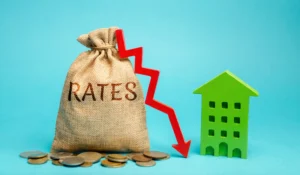Negative interest rates are no longer a rare experiment. Today, they are a global phenomenon reshaping financial markets and forex trading strategies. Central banks worldwide use negative interest rates to combat deflation, encourage borrowing, and support economic growth. For traders, these policies present new challenges and opportunities. Negative interest rates impact every facet of currency valuation, forex trading strategies, and even the mechanics of forex order execution.
The world of trading is not the same as it was a decade ago. Major central banks like the European Central Bank, the Bank of Japan, and the Swiss National Bank have pushed interest rates below zero. This policy shift has transformed how money flows between nations and how traders respond to both short-term news and long-term trends. Understanding negative interest rates and adapting to them is essential for anyone serious about succeeding in forex.
Negative interest rates force traders to rethink everything from position sizing to which currency pairs offer the best risk-reward. This article offers a complete guide to navigating this environment. You will learn how negative interest rates affect currency valuation, discover practical forex trading strategies, and see real-world trading slippage examples. You will also gain insight into how central bank policy and forex market volatility can make or break a trade.
The Mechanics of Negative Interest Rates
Negative interest rates occur when a central bank sets its policy rate below zero. Instead of earning interest, commercial banks must pay to keep excess reserves with the central bank. The aim is to discourage hoarding cash and incentivise lending, investing, and spending. In theory, this should spur economic activity and inflation.
Countries like Switzerland, Denmark, Sweden, and Japan have used negative rates to varying degrees. The European Central Bank has made them a core part of its monetary toolkit. Negative rates signal that the central bank is willing to do whatever it takes to revive growth.
However, negative interest rates can have unpredictable effects. For instance, banks may charge customers to deposit money. Savers might buy foreign assets or gold to escape negative yields. These changes ripple through currency valuation, affecting forex trading strategies across the globe.
Example: In 2016, Japan slashed its benchmark rate below zero. Immediately, the yen weakened against the dollar. Japanese investors moved capital overseas, seeking positive returns. Yet, as global uncertainty grew, the yen reversed and strengthened—a perfect demonstration of how negative interest rates and market sentiment interact.
Currency Valuation in a Negative Rate World
Currency valuation is highly sensitive to interest rates. Traditionally, currencies with higher interest rates attract more capital. Investors chase yield, moving money to where returns are best. Negative interest rates disrupt this pattern.
When a major central bank implements negative rates, its currency usually weakens. This is because investors want to avoid negative yields and seek higher returns elsewhere. For instance, after the ECB dropped its rates below zero, the euro lost ground against the dollar and the pound.
But there are exceptions. In times of crisis, currencies from negative-rate economies can still act as safe havens. The Swiss franc and Japanese yen often appreciate when global markets become volatile, even though both countries have negative interest rates. This is driven by their reputations for financial stability and strong current accounts.
Practical Example: Imagine a trader in the US facing negative rates in Europe. The trader sells euros and buys dollars, expecting the euro to weaken. Yet, if a financial crisis hits, investors worldwide buy euros and francs, overriding the impact of negative interest rates. In this case, understanding central bank policy and forex market volatility is crucial.
Forex Trading Strategies That Work with Negative Interest Rates
Smart traders never rely on just one approach. In negative interest rate environments, the need for adaptive forex trading strategies becomes obvious. Let’s look at several strategies that work.
Carry Trade Adjustments
Traditionally, carry trading meant borrowing in a low-interest currency and investing in a high-yielding one. With negative rates, classic carry trades lose their appeal or even become risky. Now, traders often seek relative changes in interest rates, focusing on central bank policy shifts. For example, if the Bank of England signals a move toward positive rates while the ECB stays negative, traders might go long on GBP against EUR.
Shorter Holding Periods
Negative swap rates make holding trades overnight costly. Many traders shorten their holding periods, trading intraday or for just a few days. This approach helps avoid the costs associated with negative interest rates, protecting profits.
Focus on Central Bank Policy Announcements
Every word from central bankers matters. Even a hint of policy change can trigger massive forex market volatility. For example, the Bank of Japan surprised the markets with a sudden rate cut in 2016, sending the yen down by hundreds of pips in minutes. Monitoring the calendar for rate decisions and press conferences is now mandatory for all traders.
Hedging with Safe Havens
Sometimes, negative interest rates push investors into safe haven assets like gold or the US dollar. Traders may hedge their positions by holding a mix of safe haven currencies or precious metals during periods of high volatility.
Reacting to Forex Order Execution Challenges
In fast-moving markets, negative rates can increase slippage. Order execution becomes more difficult as volatility rises. For example, if the ECB cuts rates further into negative territory, you may see sudden spikes in euro pairs, causing trading slippage examples that affect your bottom line. Using limit orders instead of market orders helps manage these risks.
Central Bank Policy: The Forex Trader’s Compass
Central bank policy is the heartbeat of the forex market. Every decision, every speech, and every change in sentiment matters. Traders who ignore central bank policy risk being blindsided by market-moving events.
Key areas to monitor include:
- Scheduled rate decisions, which set the tone for currency valuation
- Forward guidance, where central bankers signal future policy moves
- Emergency interventions, often leading to spikes in forex market volatility
- Official speeches, offering hints about changing policy
For example, when the Swiss National Bank ended its euro peg and dropped rates deeply negative, the franc surged by over 20 percent within minutes. Traders who were monitoring central bank policy were able to react swiftly, minimising losses or capturing profits.
Another example comes from the European Central Bank. Its statements about future negative interest rates often create immediate moves in euro pairs. Even rumours about possible policy shifts can drive significant volatility.
Smart traders create calendars of key central bank events and set alerts for unscheduled announcements. They also read speeches and policy minutes to get a sense of central bank thinking before official moves happen.
Forex Market Volatility: Thriving in Turbulent Waters
Negative interest rates inject more volatility into currency markets. As traditional relationships break down, forex market volatility can spike suddenly. Price swings become bigger, trends become shorter, and surprises are frequent.
Managing volatility is now a core part of any forex trading strategy. Traders use smaller position sizes, tighter stops, and flexible profit targets. Diversification across several currency pairs and timeframes can also reduce risk.
Example: After the ECB cut rates further into negative territory in 2019, EURUSD spiked sharply. Many traders experienced trading slippage examples as their orders were filled at worse prices than expected. Those using limit orders or trading outside of news windows managed to avoid the worst impacts.
Other sources of volatility include:
- Geopolitical events, like trade wars or elections
- Shifts in risk sentiment, driven by global news
- Sudden central bank interventions
A practical approach to volatility involves:
- Calculating average true range (ATR) to set realistic stop-loss and take-profit levels
- Using trailing stops to lock in profits as volatility increases
- Avoiding trading during high-impact news releases unless you have a strong edge
Volatility can be both a risk and an opportunity. By respecting the power of negative interest rates to change the game, traders can thrive even in the most turbulent markets.
Order Execution and Real-World Trading Slippage Examples
Order execution is an underappreciated part of successful trading. Negative interest rates make it even more critical. Fast markets lead to more frequent slippage, where you enter or exit a trade at a different price than expected.
Example 1: ECB Press Conference Slippage
Suppose you place a buy order for EURUSD right as the ECB announces a new round of negative interest rates. The market spikes 40 pips in seconds. Your order gets filled 20 pips above your intended price. This slippage can wipe out much of your expected profit.
Example 2: Flash Crash
During the Swiss franc shock in 2015, market liquidity vanished. Many stop orders were filled at prices far from intended levels. Some traders suffered massive losses, while others with limit orders escaped the worst outcomes.
Ways to reduce trading slippage:
- Use limit orders whenever possible
- Trade during periods of higher liquidity, such as the London or New York session overlap
- Avoid large position sizes in thin markets
- Test your broker’s execution on demo accounts
By managing order execution risks, you protect your profits and avoid the emotional rollercoaster of unexpected losses.
Case Studies: Lessons from Negative Interest Rate Markets
Swiss Franc Appreciation
The Swiss franc remains a classic case study. In 2015, the Swiss National Bank shocked the world by removing its euro cap and slashing rates to minus 0.75 percent. The franc soared instantly, catching many traders on the wrong side. This event highlighted the dangers of ignoring central bank policy and underestimating forex market volatility.
Traders who followed central bank signals and used stop orders managed risk better. Those who ignored the warning signs experienced catastrophic trading slippage examples.
Japanese Yen and Safe Haven Flows
Japan’s long history with negative interest rates offers many lessons. The yen often acts as a safe haven, rising during periods of global stress. In 2020, as the pandemic began, the yen strengthened even with deeply negative rates. Traders who built forex trading strategies that went long yen during risk-off moves captured significant gains.
Eurozone Carry Trade Shifts
Carry traders have struggled since the ECB adopted negative rates. Many shifted to cross-currency pairs or reduced trade duration to avoid negative swaps. Others incorporated macroeconomic and technical analysis, using central bank policy as a filter for trade direction.
Advanced Forex Trading Strategies for Negative Rate Markets
Successful traders use a blend of tactics in negative interest rate environments. Consider these advanced approaches:
Diversification Across Currency Pairs
Rather than focus on a single currency, diversify across several pairs. This approach spreads risk and increases the chance of finding profitable setups when one market is flat.
Mix of Technical and Fundamental Analysis
Combine chart patterns with news flow. For instance, use technical indicators to spot entry points but confirm direction with central bank policy trends and macroeconomic data.
Event-Driven Trading
Some traders specialise in trading around central bank meetings and major economic releases. This approach requires fast execution and a deep understanding of order execution and volatility.
Position Sizing and Portfolio Hedging
Risk less per trade and consider hedging with options or non-forex assets like gold. This helps smooth out returns during periods of forex market volatility.
Algorithmic and High-Frequency Trading
Automated systems can exploit micro-movements during news releases. However, thorough backtesting and monitoring for trading slippage examples are critical to success.
Risk Management: Protecting Your Edge
Risk management is the foundation of all profitable trading. In negative rate environments, risks multiply. Sudden policy shifts, unexpected slippage, and changing currency correlations all require extra attention.
Practical tips include:
- Keep leverage low, especially during high volatility.
- Use stop losses and take profits religiously
- Monitor overnight swap rates and adjust positions before major announcements
- Regularly review and adapt your trading strategies to new market conditions.
If you trade with a partner or team, consider holding regular meetings to discuss central bank policy changes and their impact on forex market volatility and order execution.
The Future of Forex Trading with Negative Interest Rates
Negative interest rates may stay with us for years. Central banks continue to use them as a tool against economic slowdowns and weak inflation. Traders who succeed in this environment do not rely on outdated playbooks. They monitor central bank policy, embrace volatility, and optimise order execution to reduce trading slippage.
Continuous learning is key. Subscribe to financial news, use economic calendars, and join trading communities to stay ahead of market changes. The more you know, the better you will adapt your forex trading strategies for the challenges and opportunities that negative interest rates bring.
Conclusion: Mastering Forex in a Negative Interest Rate Era
Negative interest rates are redefining the forex trading landscape. Success depends on your ability to adapt strategies, manage risk, and understand the interplay between central bank policy, currency valuation, forex market volatility, and order execution. Use real-world trading slippage examples to refine your approach and protect profits.
Traders willing to learn and evolve will thrive in the new normal. Build a plan, test it, and stay flexible. Negative interest rates will continue to shape the future, but with the right mindset and practical forex trading strategies, you can achieve consistent results even when the financial world is upside down.
Read here to learn more about “Slippage Trading: How It Impacts Your Forex Results“.

I’m Chaitali Sethi — a seasoned financial writer and strategist specializing in Forex trading, market behavior, and trader psychology. With a deep understanding of global markets and economic trends, I simplify complex financial concepts into clear, actionable insights that empower traders at every level. Whether it’s dissecting winning strategies, breaking down market sentiment, or helping traders build the right mindset, my content bridges the gap between information and implementation.

